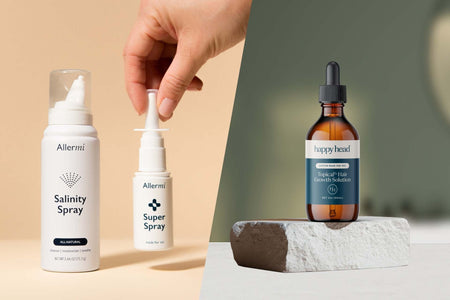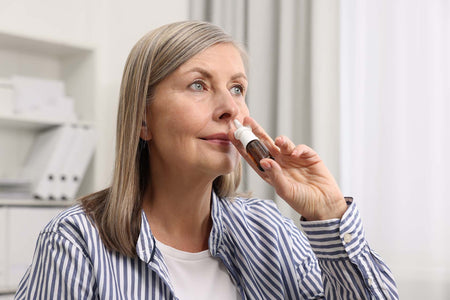Overview:
This 14-day, multicenter, randomized, double-blind study investigated the efficacy and safety of a combination nasal spray containing azelastine (an antihistamine) and fluticasone (a corticosteroid) for patients with moderate-to-severe seasonal allergic rhinitis (SAR) during the Texas mountain cedar season. Patients were randomized to receive one of four treatments: azelastine alone, fluticasone alone, azelastine + fluticasone combination, or placebo. The primary outcome was change in total nasal symptom score (TNSS), which included nasal congestion, runny nose, sneezing, and itchy nose.
The Takeaways:
-
The combination nasal spray resulted in the greatest improvement in TNSS (28.4%), outperforming fluticasone alone (20.4%), azelastine alone (16.4%), and placebo (11.2%) (P ≤ .003).
-
All three active treatments were statistically superior to placebo, but the combination was significantly more effective than either monotherapy.
-
The combination spray was well-tolerated, with adverse events similar to those seen in individual treatments.
Why It Matters:
Monotherapies for SAR don’t always offer complete relief. This study shows that combining an intranasal antihistamine with a corticosteroid delivers greater and faster symptom reduction than using either agent alone. The findings support integrated, dual-mechanism therapies as a more effective approach for patients with moderate-to-severe seasonal allergies.
The Link to Allermi:
Allermi’s innovative approach mirrors the success of this combination therapy by custom-formulating nasal sprays that include both azelastine and corticosteroid. This study validates Allermi’s model of using synergistic ingredients in one delivery to maximize symptom relief, reduce reliance on systemic medications, and offer convenience—all tailored to each patient’s specific needs. The result: stronger, faster, and longer-lasting relief for those with challenging seasonal allergy symptoms.
For more details, refer to the full study: Double-blind, placebo-controlled study of azelastine and fluticasone in a single nasal spray delivery device








